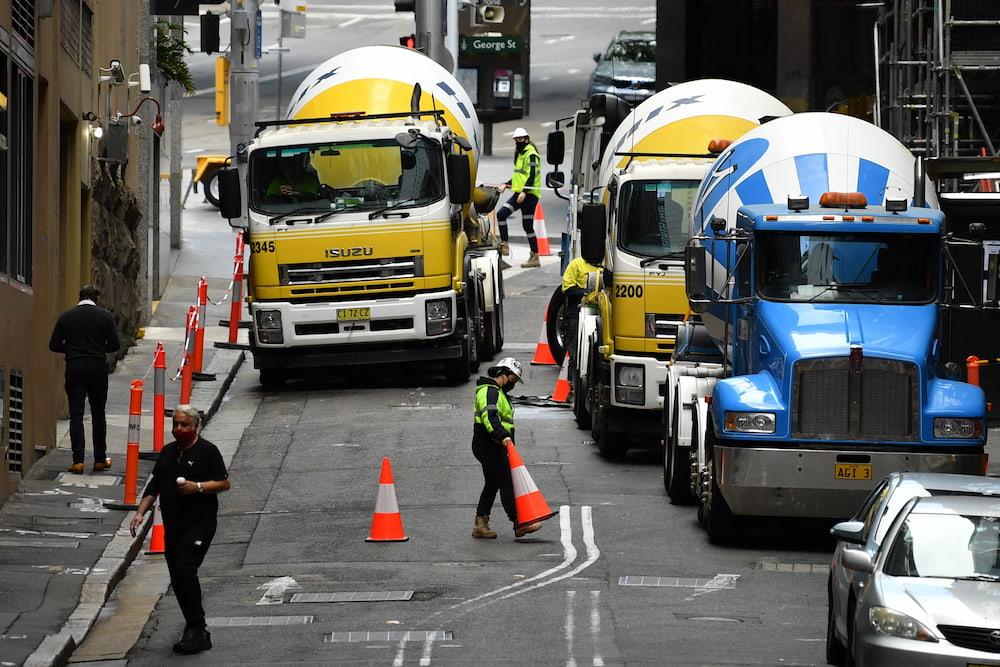Treasury boss Steven Kennedy has warned the nation’s leaders one in 10 Australian workers could be be absent at any given time during the peak of Omicron outbreak, and more if schools don’t reopen.
Dr Kennedy addressed the national cabinet on Thursday as the prime minister, premiers and chief ministers grapple with the highly infectious strain of the coronavirus, which has seen tens of thousands of daily cases and a spike in deaths.
“That’s going to have an inevitable impact on the workforce and that has to be managed,” Prime Minister Scott Morrison told reporters in Canberra.
He said Dr Kennedy had told the meeting 10 per cent of the workforce could be absent because of COVID at any one time.
“If schools don’t open, that can add an additional five per cent of the absenteeism in the workforce,” Mr Morrison said.
“It is absolutely essential for schools to go back safely and remain safely open if we are not going to see any further exacerbation of the workforce challenges we are currently facing.”
Economists expect the labour market likely eked out another fall in the unemployment rate in the final month of 2021, before the COVID-19 Omicron variant made its mark.
While there are signs that demand for workers is coming off the boil as Omicron disrupts business, there were still plenty of work up for grabs late last year.
Job numbers for December are due to be released by the Australian Bureau of Statistics next Thursday.
In November, a record 366,100 people entered or rejoined the workforce following the end of Delta variant lockdowns in NSW, Victoria and the ACT.
The unemployment rate fell sharply to 4.6 per cent, after spiking to 5.2 per cent in October.
“Data remains volatile on a monthly basis, reflecting the timing of lockdowns and the impact of virus outbreaks,” Commonwealth Securities chief economist Craig James said.
“A more modest 30,000 lift in jobs is tipped for December with the jobless rate likely down from 4.6 per cent to 4.5 per cent.”
The unemployment rate last hit 4.5 per cent – a 13-year low – in August last year, prior to the Delta restrictions which saw half the population in lockdown.
However, ANZ senior economist Catherine Birch believes that after an extraordinary post-restrictions rebound, the labour market will have to change gear yet again due to the spread of Omicron and its effects on consumer behaviour, worker availability and the broader economy
“The full effects of Omicron on the Australian labour market are not clear at this stage,” Ms Birch said.
Some workers may be laid off if their employers have to reduce operations or shut down, she added, although some businesses expecting the situation to be temporary may choose to hold onto their workers.
Some firms may also have to hire additional people to cover workers temporarily absent due to contracting COVID-19 or being in isolation.
“As such, we think any fall in employment would be small and temporary,” she said.
A sustained drop in the unemployment rate is a key component of the Reserve Bank of Australia’s thinking about when it will consider lifting the key cash interest rate from a record low of 0.1 per cent.
In its most recent forecasts, the central bank predicted the unemployment rate to reach 4.25 per cent by the end of 2022, and four per cent by the end of 2023.
A stronger labour market, and a much-needed lift in wages growth to above three per cent, are seen as necessary to keep inflation sustainably between its two to three per cent target.
Australian consumer price index data for the December quarter are due on January 25.
Get all the latest Canberra news, sport, entertainment, lifestyle, competitions and more delivered straight to your inbox with the Canberra Daily Daily Newsletter. Sign up here.



